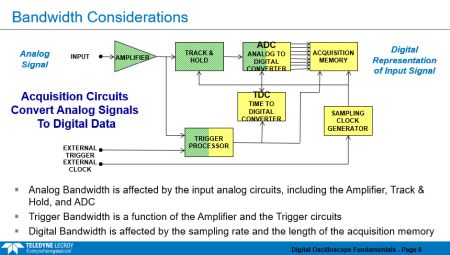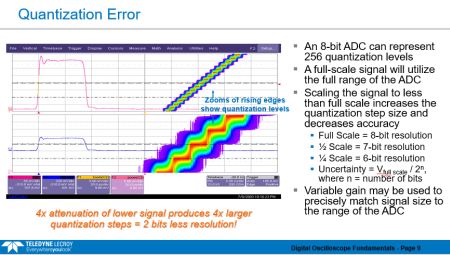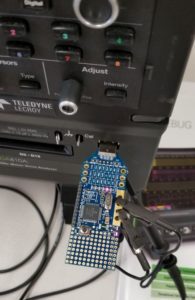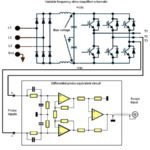Teledyne LeCroy is conducting one-day workshops on beginner and intermediate scope practices. We sat through the events that were held in the Cleveland, Ohio area. Here’s what we saw.
 The Teledyne LeCroy scope workshops are held around the country, usually where LeCroy has a local office. Where we attended, things got going around 10 am and broke around 2 pm, so participants had enough time on either end of the event to get back to their office. Participants get hands-on time with LeCroy scopes that are usually demo models from the local office. Because they are normally used for product demos, no two of the scopes in the workshop are alike. That’s not really a hindrance, though, because LeCroy scopes largely all work the same way.
The Teledyne LeCroy scope workshops are held around the country, usually where LeCroy has a local office. Where we attended, things got going around 10 am and broke around 2 pm, so participants had enough time on either end of the event to get back to their office. Participants get hands-on time with LeCroy scopes that are usually demo models from the local office. Because they are normally used for product demos, no two of the scopes in the workshop are alike. That’s not really a hindrance, though, because LeCroy scopes largely all work the same way.
 The basic scope class covers the basic setup of a digital scope, analog and digital bandwidth, memory, signal sampling, getting different displays, triggering, using cursors for measuring different parameters, scope math functions, and other fundamentals. The workshop may be particularly helpful for those who are a little fuzzy on the various kinds of memory that pertain to scope work: acquisition memory, interleaved memory, memory segmentation, and the relationship between memory and max sampling rate.
The basic scope class covers the basic setup of a digital scope, analog and digital bandwidth, memory, signal sampling, getting different displays, triggering, using cursors for measuring different parameters, scope math functions, and other fundamentals. The workshop may be particularly helpful for those who are a little fuzzy on the various kinds of memory that pertain to scope work: acquisition memory, interleaved memory, memory segmentation, and the relationship between memory and max sampling rate.

The same can be said for sampling. Participants get a review of roll mode, real-time sampling, random interleave sampling or equivalent time sampling. Also covered, of course, is aliasing and how to watch out for it.
LeCroy scopes are generally sophisticated, so there is a lot to cover in the area of display modes and making measurements on the display. These concepts get covered in an intro presentation, but they start to become clear during the series of scope exercises that participants run through during the latter two-thirds of the class.

The intermediate class which is run on the second day has the same basic format as the first day but concentrates on some of the finer points of signal capture. Topics include quantization error, how displaying signals on less than a full screen may reduce vertical resolution, and interpolation techniques. Also covered are the effect of memory length on the effective sampling rate. A section on digital filtering and the use – or non-use – of sin(x)/x interpolation was particularly illuminating.

Once again, these concepts became clearer as we were given hands-on time to see for ourselves how to invoke these parameters. Class participants could also monitor the signals on a small demo board that plugged into one of the USB plugs on the scope and generated an I2C data signal whose data and address could be displayed.
All in all, the LeCroy workshops were a good way to spend a few hours boning up on scope use.





Leave a Reply
You must be logged in to post a comment.